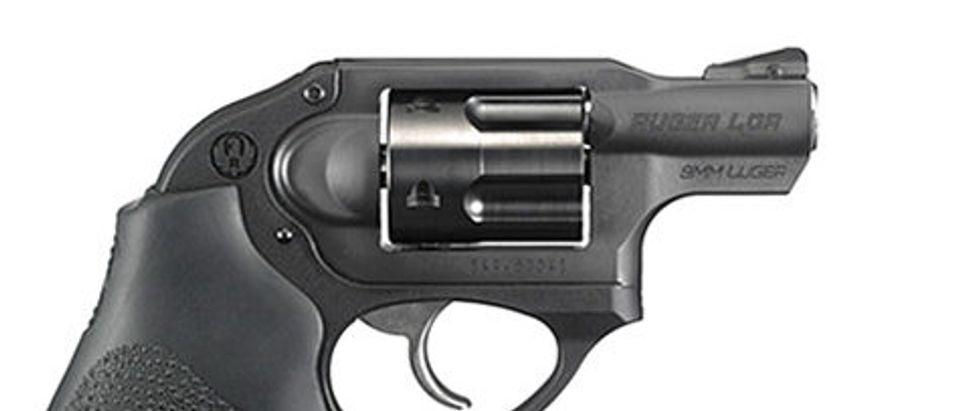By Sam Hoober, Alien Gear Holsters
Ruger recently announced a new model in the SP101 series, a new model chambered for 9x19mm. The SP101 is normally chambered for .357 Magnum or .38 Special – though there’s the odd .327 Federal and .22 LR model as well – so it would seem a little redundant to offer one in 9x19mm. It’s not even a revolver round; the case is rimless.
Except that it’s actually a great idea. In fact, if you wanted to pick up a snubbie for daily carry in a concealed carry holster, you might even be better off than with .38 Special.
It’s not that .38 Special isn’t a good round. It is, and there’s such a long track record for .38 Special being effective as a defensive rounds that it would be pointless to argue otherwise. A 4-inch Model 10 loaded with 158-grain LSWCHP rounds is plenty of gun, or for that matter a snub loaded with short-barrel hollowpoints.
However, the 9mm has a little more to offer most shooters, with the possible exception of people who hunt small game with .38 Special. While not be as common a handgun hunting round as the magnum family of cartridges (and the 10mm) there still are some folks who do. Additionally, most of the popular semi-auto rounds (including 9mm) aren’t as good for game-getting. Not that you can’t put meat on the table with a 9mm, .40 S&W or a .45 ACP (people have!) but they aren’t as good for the purpose as, say, a .357, .41 or .44 Magnum.
One of the first benefits of a 9mm revolver is marginal improvement in ballistic performance. While the heaviest loadings of .38 Special isn’t commonly used in a 9mm case (the 158-grain load in particular) the 115-grain to 147-grain range of bullets get a bit more zip out of the 9x19mm. Granted, this comes with nearly double the chamber pressure (typical 9mm produces around 35,000 psi vs 17,000 for .38 Special) but also with an additional 100 fps to 200 fps in velocity and an extra 100 foot-pounds of energy over equivalent loadings of .38 Special.
Granted, velocity doesn’t necessarily equate to an easier stoppage on an attacker, but velocity combined with mass will often result in greater and more reliable expansion of hollowpoint rounds in a human target. Thus, you may get better terminal performance out of a 9mm round than a .38 Special…depending on the round, as some are better than others.
You’re also likely to find a bit more ammunition on store shelves, as 9mm is the caliber du jour. Everyone shoots it. Everyone has rounds for it. When you go to buy hardball, there will be more of it than there will be .38 Special. When you go to buy defensive ammunition, should you plan to carry a 9mm revolver in a concealed carry holster, you’ll find more of that too.
Moon clips are pretty much a given, with only a couple of exceptions.
You’ll also spend less money buying it. While the difference in cost between 9mm and .38 Special is hardly the difference between, say, .45 ACP and .454 Casull, it’s definitely enough to notice. When browsing a few different online ammunition sellers, a box of 50 Blazer brass 124-grain 9x19mm FMJ goes for around $12 to $13; the price rises to $16 to $18 for a box of 50 rounds of Blazer brass 125-grain .38 Special hardball. Hardly enough to put you in the poorhouse, but enough to notice.
So…you get a bit better performance (depending on the loading) and you can shoot a 9mm revolver for cheaper.
Who can you get one from? Most of the major revolver makers already make them, though you’ll probably have to order one as they don’t appear too often in stores.
Ruger offers four in total, including the recent SP101 in 9mm. They also offer the LCR and LCRx in 9mm and a convertible Blackhawk, which comes with swappable cylinders in .357 Magnum/.38 Special and 9mm. Smith and Wesson does as well, though all three are Performance Center products (so get ready to spend) all are made on the K frame and only one (the 2.5″ Model 986) could be used as a concealed carry gun.
And again, K-frame. So not all that well, either.
Chiappa offers the Rhino in 9mm in multiple barrel lengths, though the Rhino can put some people off.
For the budget-minded, Taurus offers the 905, their 5-shot snub in 9mm, in both blue and stainless. For those that prefer not to use moon clips, the Charter Arms Pitbull (also available in .40 S&W and .45 ACP) has a specially machined cylinder which doesn’t require the shooter to use them, nor to poke empties out like people used to do with Colt and S&W M1917 revolvers.
The Korth Sky Hawk, available through Nighthawk, is likewise available in 9mm and doesn’t require the use of moon clips for firing or ejection. However, you can buy three Charter Arms Pitbulls for the same price ($1700) and have quite a bit left over for ammo.
Granted, .38 Special works just fine, so there’s nothing wrong with carrying a J-frame or what have you chambered for it. However, a 9mm revolver can give you a little more bang for your buck.
Click here to get your 1911 Pistol Shopping Guide.
Click here to get The Complete Concealed Carry Training Guide
Sam Hoober is Contributing Editor for AlienGearHolsters.com, a subsidiary of Hayden, ID, based Tedder Industries, where he writes about gun accessories, gun safety, open and concealed carry tips. Click here to visit aliengearholsters.com.


